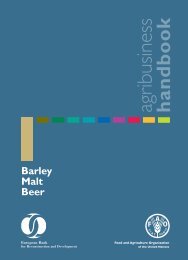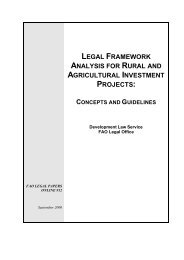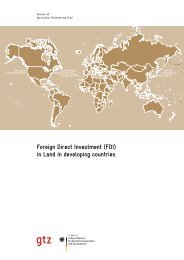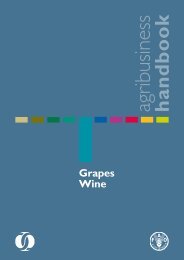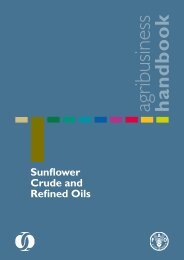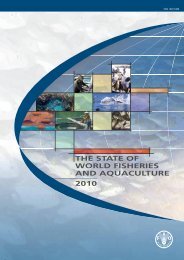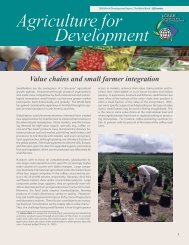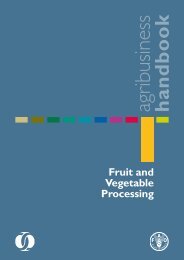Agribusiness Handbook: Milk / Dairy Products - FAO
Agribusiness Handbook: Milk / Dairy Products - FAO
Agribusiness Handbook: Milk / Dairy Products - FAO
You also want an ePaper? Increase the reach of your titles
YUMPU automatically turns print PDFs into web optimized ePapers that Google loves.
and the farm structure is fragmented. The age structure of the farming population<br />
is not favourable. Husbandry is poor due to low education standards, poor<br />
cattle genetics and limited knowledge. Yields are, therefore, low. Labour costs<br />
are low, but transportation costs are high and typically involve small volumes<br />
of milk. Hygienic milk quality is poor, and there are typically few cooling<br />
facilities for raw milk. Health and hygiene standards on farms and in dairies<br />
are well below EU norms. With a few exceptions, the level of foreign inward<br />
investment in the WBCs has been low; as a result, the current processing<br />
infrastructures are small-scale, and technological improvement is needed.<br />
Some countries in the region have been more open to foreign investment than<br />
others. Domestic industries suffer from import competition from both within<br />
and outside the region and, without restructuring of and investment in these<br />
industries, this competition will increase over time.<br />
The ETCs suffer from the same problems as do those in the WBCs. Some<br />
countries have better infrastructure, as a legacy from the days of the Soviet<br />
regime, but all countries lack investment in transport, processing infrastructures<br />
and the rural environment. Consumption levels are generally low. Without<br />
new investment in farming and processing infrastructures, the dependence<br />
on dairy imports will grow as consumers expand their buying habits and diets.<br />
47



